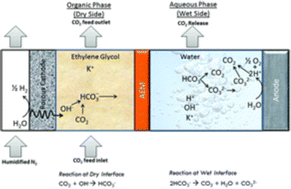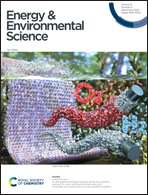Comment on “Migration-assisted, moisture gradient process for ultrafast, continuous CO2 capture from dilute sources at ambient conditions” by A. Prajapati, R. Sartape, T. Rojas, N. K. Dandu, P. Dhakal, A. S. Thorat, J. Xie, I. Bessa, M. T. Galante, M. H. S. Andrade, R. T. Somich, M. V. Rebouças, G. T. Hutras, N. Diniz, A. T. Ngo, J. Shah and M. R. Singh, Energy Environ. Sci., 2022, 15, 680
Abstract
R&D efforts on carbon capture and storage (CCS) are gaining unprecedented momentum in the context of the current climate crisis. A growing body of work is proposing new methods to extract this greenhouse gas from flue gases or directly from the air. The title paper, published in this Journal, describes one electrochemically driven process to capture and separate CO2 from dilute sources by establishing a water gradient across an anion exchange membrane (AEM) that separates the organic solvent and an aqueous solution. The organic medium is ethylene glycol saturated with KOH, which captures CO2 and produces a high concentration of HCO3− which migrates to the aqueous side, where bicarbonate is converted back to CO2. Here we comment on this new process and provide several reasons we consider that, although interesting from an academic point of view, it lacks practical feasibility on an industrial scale. We also point out some inconsistencies in the article.



 Please wait while we load your content...
Please wait while we load your content...